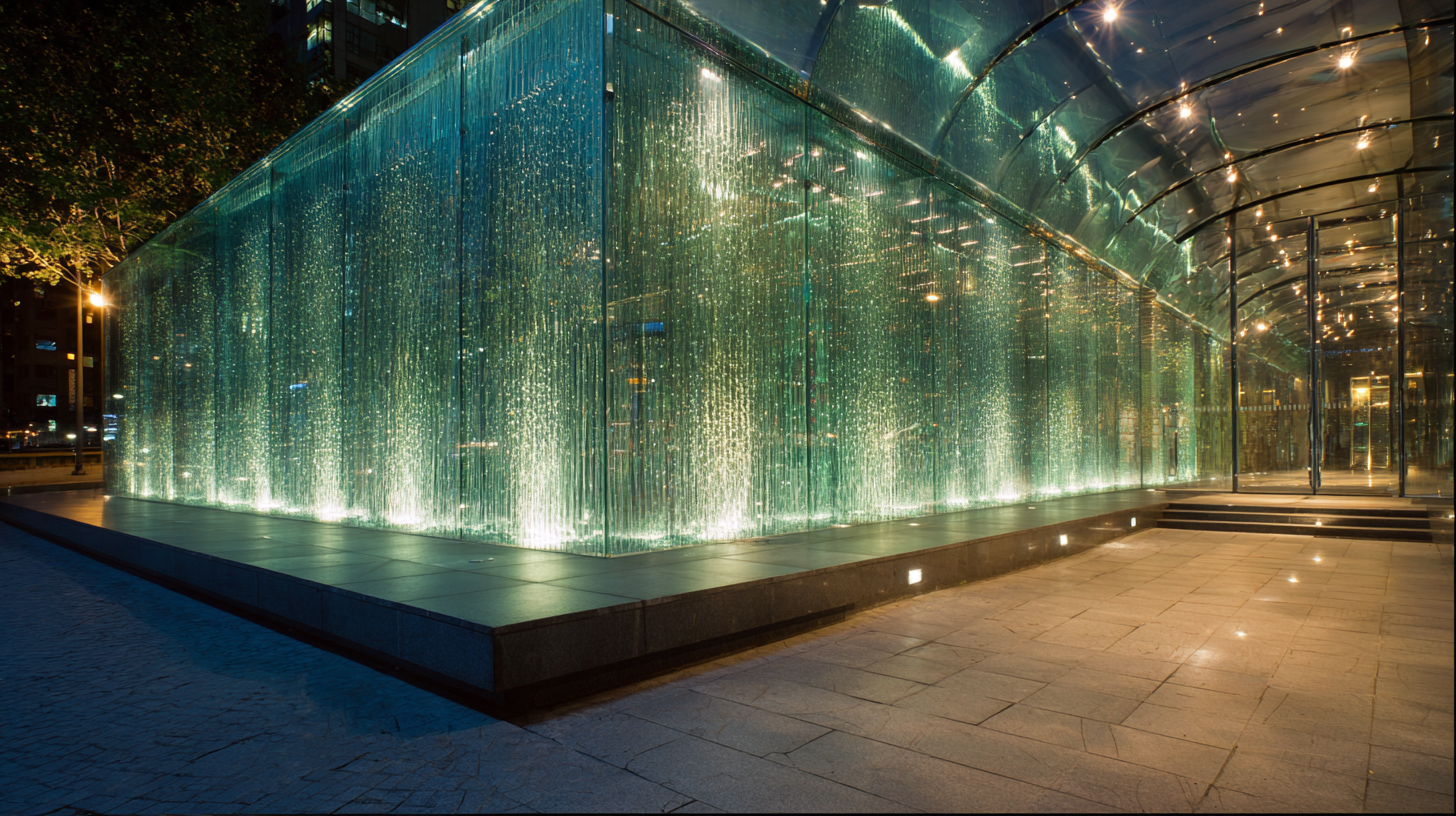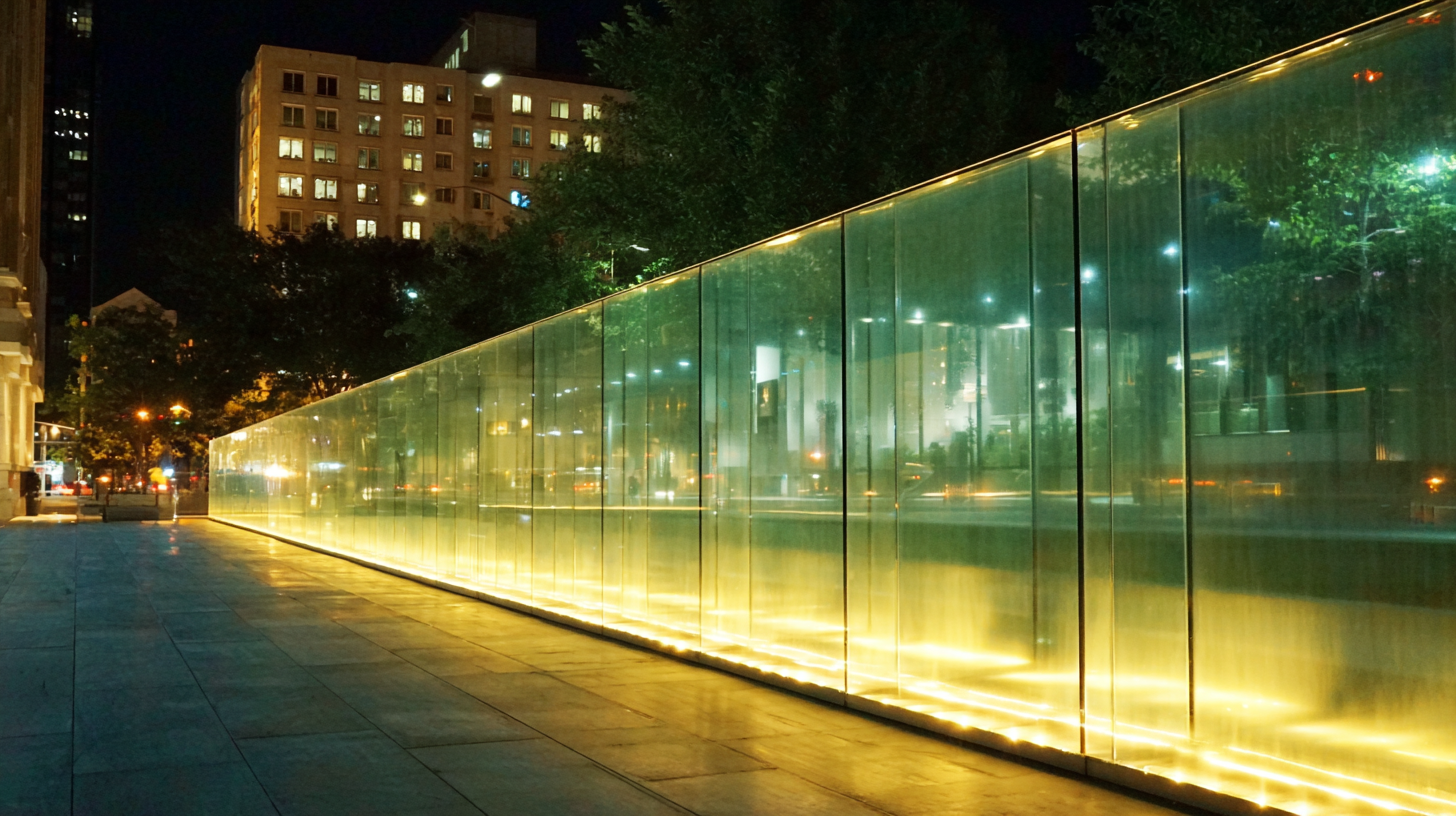
In contemporary architecture, the integration of innovative materials is essential for enhancing both aesthetic and functional qualities of buildings. One such material gaining traction is Wall Washer Glass, known for its ability to transform lighting dynamics and create visually stunning effects on architectural facades. According to a recent report by the International Glass Association, the demand for specialty glass, including Wall Washer Glass, has surged by 25% over the last two years, driven by an increasing focus on sustainable design and energy efficiency. This type of glass not only amplifies natural light but also contributes to thermal insulation, significantly reducing energy consumption. As architects and designers seek to create mesmerising visual experiences while maintaining environmental responsibility, Wall Washer Glass emerges as a pivotal element in modern architectural design, blurring the lines between form and function.

Wall washer glass has gained popularity in modern architecture for its ability to enhance the aesthetics of both residential and commercial spaces. One of the primary benefits is its capacity to create a dramatic visual effect on walls, transforming ordinary surfaces into captivating focal points. The soft, even light emitted from wall washers highlights textures and colors, bringing architectural features to life and creating an inviting atmosphere.
In addition to its aesthetic appeal, wall washer glass also contributes to energy efficiency and sustainability. By utilizing advanced glass technologies, such installations can improve insulation and reduce the need for excessive artificial lighting during the day. This not only lowers energy costs but also aligns with the growing trend of environmentally conscious design. As homeowners seek to elevate their interiors, combining wall washer glass with other decorative elements can create harmonious and stylish environments, particularly when paired with statement pieces or intricate designs.
Wall washer glass is quickly becoming a staple in modern architecture, particularly due to its significant contributions to energy efficiency in buildings. The intrinsic properties of wall washer glass, such as its translucence and ability to reflect natural light, reduce the need for artificial lighting during the day. This not only lowers energy consumption but also enhances the comfort of living spaces. By enabling ample daylighting, wall washer glass creates a bright and inviting atmosphere while minimizing reliance on electricity.
Recent advances in energy-efficient materials, such as silica aerogels, complement the use of wall washer glass in optimizing thermal insulation. The exceptional combination of low thermal conductivity and lightweight nature of these materials allows buildings to maintain comfortable indoor temperatures, significantly reducing heating and cooling costs. As architects and builders increasingly seek sustainable solutions, wall washer glass paired with innovative materials can transform not only the aesthetic of buildings but also their energy performance, creating a more sustainable built environment for the future.
In modern architecture, wall washer glass plays a crucial role in interior lighting design by providing an even distribution of light that enhances the aesthetic appeal of spaces. This type of glass allows for diffused illumination, minimizing harsh shadows and creating a serene atmosphere. According to a report by the International Energy Agency, well-designed lighting systems can reduce energy consumption by up to 30%. The installation of wall washer glass can be a significant contributor to achieving both functional and efficient lighting solutions in contemporary interiors.

When using wall washer glass, it’s essential to consider the type of LEDs employed. Options like tunable white LED systems give designers the flexibility to adjust color temperatures, significantly impacting the mood of the space. For an optimal experience, consider integrating intelligent lighting control systems, which can enhance user interaction and maximize energy savings. Additionally, the positioning of wall washers is vital — an angle of 30 degrees from the wall can achieve optimal light distribution, enhancing the visual appeal and texture of surfaces.
Tips: Always ensure that the wall washer glass is installed with reflective surfaces to amplify the light output. Regular maintenance checks can also help sustain its performance and aesthetics over time. Be mindful of the color and finish of walls — lighter shades will benefit most from wall washer applications, as they reflect more light, creating a brighter environment.
Wall washer glass has emerged as a transformative element in modern architecture, enhancing both aesthetic appeal and functional design. Its unique ability to diffuse light allows for innovative lighting applications that create inviting atmospheres in a variety of spaces. By integrating wall washer glass into the design, architects can achieve a seamless blend of natural and artificial light, maximizing daylight use during the day and providing soft, ambient illumination at night. This property not only enhances the vibrancy of interiors but also reduces the need for harsh overhead lighting, promoting a more sustainable approach to energy consumption.

Furthermore, wall washer glass can be leveraged in public and commercial settings to highlight architectural features and create engaging visual displays. For example, when used in museums or galleries, this type of glass can draw attention to artwork and exhibits, enhancing the viewer's experience. In exterior applications, wall washer glass can illuminate building façades, transforming them into stunning visual canvases that change with the time of day and season. These innovative uses underscore the versatility of wall washer glass, making it an ideal choice for contemporary architects looking to push the boundaries of design while improving functionality and sustainability.
Wall washer glass is increasingly becoming a favored choice in modern architecture due to its numerous advantages, particularly in terms of durability and maintenance. One of its most significant benefits is its robust nature, designed to withstand various environmental factors. Unlike traditional materials, wall washer glass is less susceptible to corrosion and degradation over time, making it an ideal solution for both indoor and outdoor applications. This enhances the longevity of architectural designs, allowing for investment savings in the long run.
Maintaining wall washer glass is also remarkably straightforward. The surface is typically treated to resist stains and dirt accumulation, meaning that regular cleaning requires only mild soap and water. To maintain its appearance and functionality, consider scheduling routine inspections to check for any chips or scratches, which can be easily repaired.
Tip: To preserve the clarity of wall washer glass, avoid using abrasive cleaners or tools that can scratch the surface. Instead, use soft cloths or sponges to keep the glass shining and looking brand new. Additionally, installing the glass at an angle can help minimize water spots and enhance natural drainage, further reducing maintenance efforts.